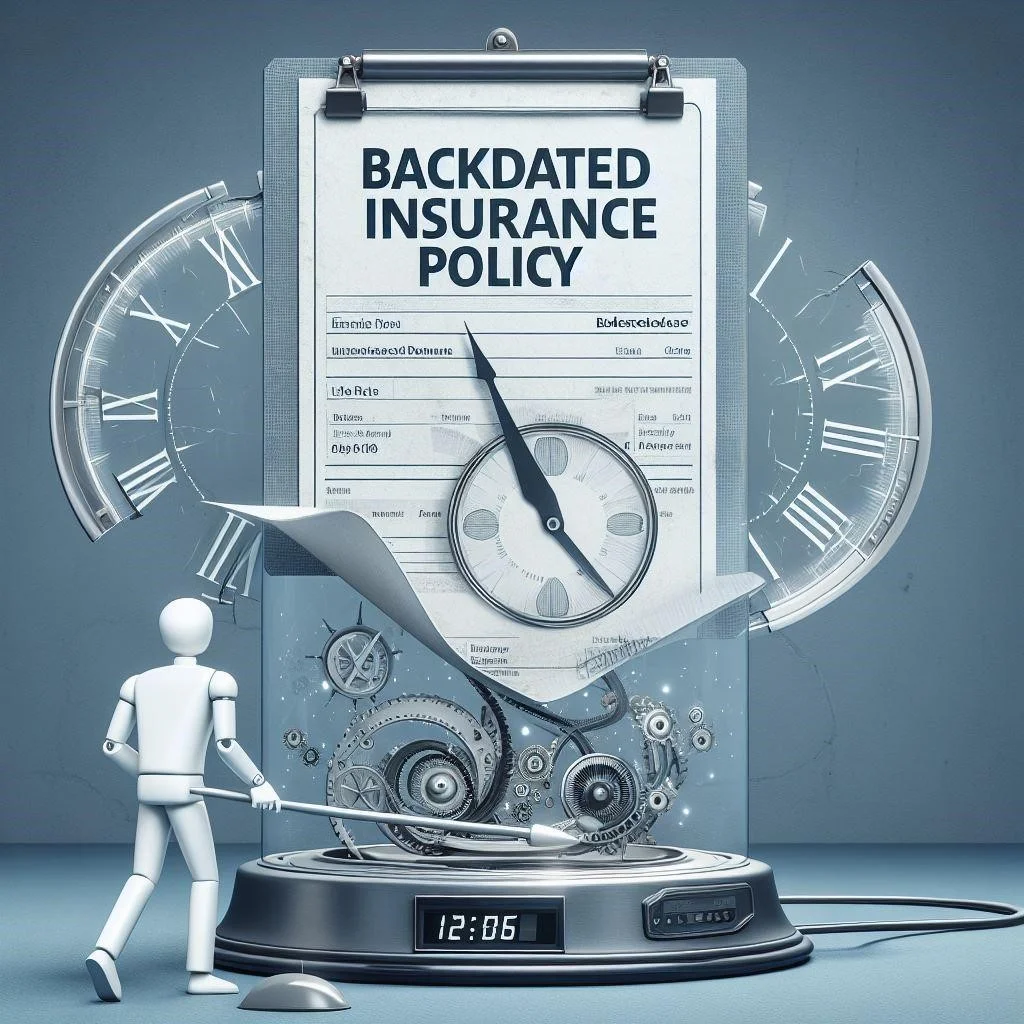The world of insurance is a complex landscape, and contemplating the idea of backdating a policy introduces a new layer of intrigue. Before embarking on this time-traveling venture, it’s essential to unravel the mysteries: what happens when an insurance policy is backdated? This comprehensive guide serves as your compass, exploring the potential benefits, lurking complications, and financial implications. Dive into the intricacies to ensure you make an informed decision before taking the plunge.
Table of Contents
ToggleReasons for Backdating a Policy
Before we delve into the intricacies of backdating, let’s uncover the motives behind this practice. Understanding why individuals choose to turn back time on their insurance policies is crucial for making informed decisions.
Securing Lower Premiums: The Age Advantage
One significant motive for backdating a policy is the potential for securing lower premiums. By choosing an earlier effective date, policyholders can capitalize on their younger age, which often translates to more favorable premium rates. It’s a strategic move that can lead to long-term cost savings.
Meeting Coverage Eligibility: A Niche Requirement
Backdating sometimes becomes a means to meet specific eligibility requirements for desirable coverage. Certain policies may have conditions that can be fulfilled by backdating, providing access to coverage options that might otherwise be unavailable.
Tailoring Policy Features: A Customized Approach
Policyholders may also consider backdating to tailor specific features within a policy. This could involve aligning the policy with certain life events or financial planning goals. Understanding the potential customization options can make backdating an attractive prospect for those seeking a personalized insurance solution.
Navigating the Time Warp: Exploring the Limits and Regulations
While the concept of backdating may seem like turning the clock at will, some limits and regulations dictate the feasibility of this practice. Let’s explore the constraints associated with backdating an insurance policy.
Policy Type and Company: A Varied Landscape
The rules surrounding backdating are not universal. They vary based on the type of insurance and the policies of individual insurance companies. Life insurance, for instance, may have different regulations compared to other types of insurance. Understanding the landscape ensures compliance with the specific rules governing your policy.
Life Insurance Limitations: Stricter Boundaries
Life insurance, in particular, tends to have stricter limitations when it comes to backdating. Insurance companies are cautious about retroactively adjusting life insurance policies due to the long-term nature of these contracts. Policyholders need to be aware of these limitations before considering backdating.
Allowed Backdating Period: Within Limits
The period during which a policy can be backdated is not unlimited. Commonly, insurance companies allow backdating within a few months to half a year from the policy’s inception. Understanding this timeframe is crucial for making informed decisions about the feasibility of backdating.
Delving Deeper: Unveiling the Hidden Costs and Paperwork Maze
Backdating an insurance policy is not a straightforward process. It involves navigating through hidden costs and paperwork complexities. Let’s explore the intricacies associated with backdating.
Proof of Insurability: A Health Checkpoint
To backdate a policy, insurers typically require proof of insurability. This means providing evidence of your health and insurability at the backdated date. This could involve medical examinations or submitting relevant health records. It’s a crucial checkpoint to ensure that the policyholder is insurable at the chosen effective date.
Premium Backpayment: Paying the Price
One of the hidden costs of backdating is the need to backpay premiums between the actual inception and the backdated date. This ensures that the insurance coverage is fully paid for the entire period being covered. Policyholders need to be prepared for this financial commitment.
Cash Value and Death Benefits: Impacts on Policy Value
Backdating might have implications for the cash value and death benefits of the policy. The specific impact depends on the policy type and its features. IPolicyholders must understand how backdating might influence the financial aspects of their insurance coverage.
Making an Informed Choice: Weighing the Advantages and Cautions
Now that we’ve explored the motives, regulations, and intricacies, let’s weigh the pros and cons of making an informed choice about backdating your insurance policy.
Benefits: Lower Premiums and Tailored Features
The potential benefits of backdating include lower premiums based on a younger age, meeting specific coverage eligibility requirements, and the ability to tailor policy features to individual needs. These advantages can make backdating an attractive option for those seeking a customized and cost-effective insurance solution.
Concerns: Fraud Risks and Financial Burdens
However, caution is warranted. Fraudulent backdating, where individuals attempt to manipulate the system, can lead to policy cancellation and legal consequences. There are also concerns about potential complications with pre-existing conditions and unforeseen financial burdens associated with premium back payment.
Conclusion: Backdating with Confidence: A Final Word
In conclusion, backdating an insurance policy can offer intriguing possibilities, but it’s vital to approach it with caution and knowledge. By utilizing this guide and seeking professional advice, you can navigate the intricacies of this decision and confidently choose the path that best aligns with your circumstances and financial goals. Remember, transparency, understanding the limitations, and weighing the potential consequences are key to making an informed choice.
Turning back time on your insurance policy is a decision that should be made with careful consideration. It’s not merely a journey into the past but a significant financial commitment with potential long-term consequences. As you contemplate backdating, ensure you clearly understand the motives, regulations, and hidden costs involved. With knowledge as your guide, you can make decisions that align with your financial well-being and provide the insurance coverage you need.
Remember, the key to backdating with confidence is knowledge, transparency, and a thorough understanding of your individual insurance needs. By approaching this decision with diligence, you can navigate the complexities and potentially unlock benefits that align with your financial goals.





